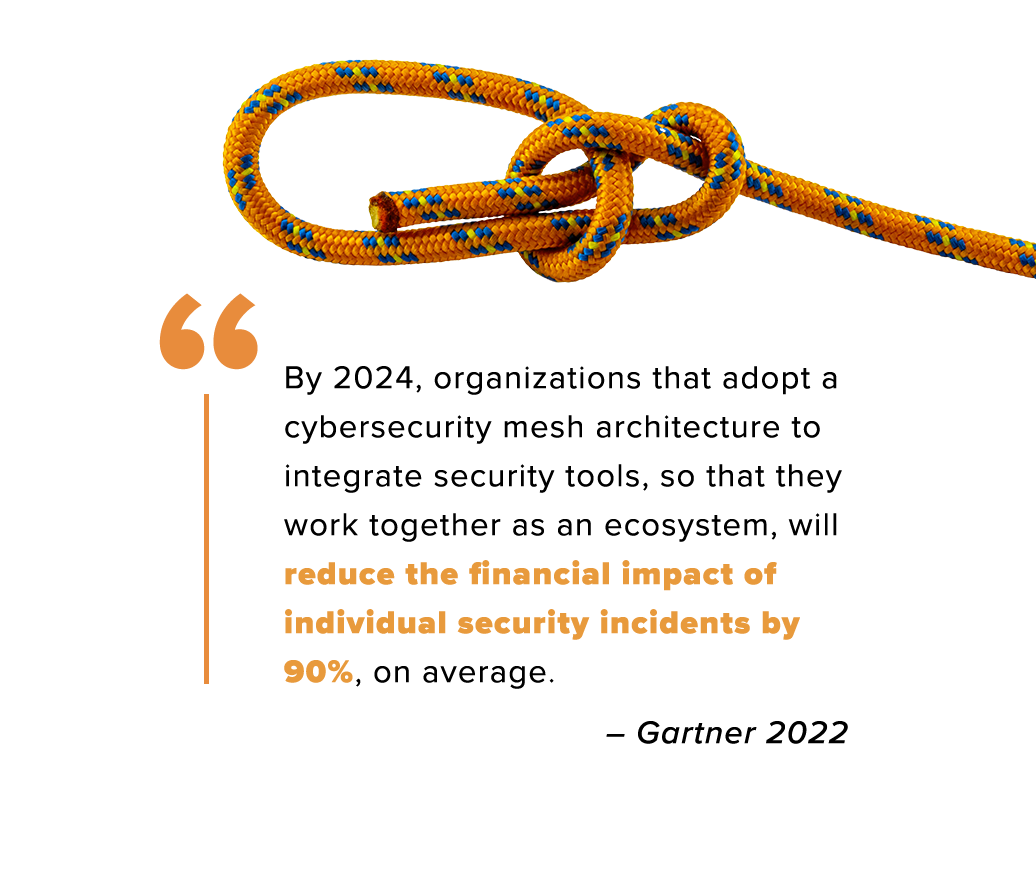
If you could snap your fingers and remove one IT obstacle from your to-do list, what would it be? Maybe there isn't one simple thing, maybe it's more of a system that is running slow, an unreliable network, access glitches, zero confidence in your data backup and disaster recovery capabilities, or maybe you just don't have the time to implement a comprehensive cybersecurity program to keep your organization safe. No matter the issue(s), the built-up frustration due to things not working properly will impact your ability to thrive and to hire and retain the best talent in your industry.
It's no secret that the enterprise market is ready for Chief Resilience Officer (CRO) roles - those who understand how to sustain operational excellence amidst disruption. But if you are not sizable enough for a CRO, a trusted Solutions Provider with deep expertise in managed security services can fill that role to facilitate strategic cybersecurity programs to build resilience and take ownership in risk management.
Independence from Fear
If you already have a business continuity plan, preparation and practice can remove your implementation fears quickly to ensure that the proper recovery methodologies are in place before disaster strikes. Falling victim to a ransomware attack is a chaotic experience, fraught with distrust, miscommunication, and hasty decisions. But you can control that chaos with tabletop exercises. By testing your plan and the deliverability of recovery strategies, each player will learn their role and responsibility, and you can eliminate gaps in disaster response and remediation.
You will save time, money, and heartache if you invest in the stability of your future by coordinating feedback and recommendations from cross-functional teams to create your disaster response and training plans. A resilient organization that can manage risk, maintain compliance, and reduce operational disruption is a comfort to both employees and investors.
How can you build resilience and embed cybersecurity throughout your IT infrastructure? Gartner recommends that organizations deploy a cybersecurity mesh architecture to manage identity and access. But that layered security concept can evolve into a seamless, security-first, comprehensive security strategy for your entire infrastructure - a security program that builds enterprise-wide, integrated security and extended threat detections and response (xTDR) into applications, workloads, cloud services, users, assets, networks, data lakes, and operations.
The Cost of Inferior Security Programs
Just look to the daily news to reveal how deeply the latest ransomware attacks have impacted enterprises. Ransom demands have increased steadily and have magnified remediation costs (averaging $1.85 million) associated with data exfiltration and exposure. And those costs do not begin to capture federal compliance fines and the long-term impacts on your brand and ability to leverage investments for loan qualifications. You just can't afford to settle for piecemeal security tools.

Begin your journey to a more comprehensive security posture by:
- Eliminating overlapping and duplicative tools that lead to complacency and confusion.
- Hiring a third party to assess your current security program and identify vulnerabilities and opportunities for cost efficiencies.
- Mandating employee security training at every level to strengthen your first line of defense
- Investing in response and recovery strategies
- Knowing your acceptable risk profile
- Implementing user behavior monitoring and analysis
- Controlling access to applications, data points, and workflows
- Wrapping your IT in a cybersecurity mesh
Future Focused IT Infrastructure
You want all that technology promises to make your organization future-forward - like automation, AI for service intelligence, and cloud capabilities for speed, agility, data processing, and storage. But often, too much of a good thing also increases your cyber risk. A single misconfiguration can lead to a ransomware attack. One missed patch can invite a threat actor into your network. So you may need to lean on a Solutions Provider to get the right tech stack for your unique needs and to understand your risk tolerance.
But using too many tools and too many vendors to capitalize on all the tech can also increase your risk. If you can consolidate your IT service vendors, you can get closer to building a unified platform for better visibility and more targeted security management. A Solutions Provider with deep experience in managed security services can offer fundamental cybersecurity protection, control access, manage assets, monitor user behavior, ensure organization compliance, and deploy multi-disciplinary resources to protect your business and IT infrastructure.
Benefits of Comprehensive IT Management
Digital disruption is a major risk to organizations. CROs and other C-Suite leaders are in a race against time to mature their security programs - moving them from purely reactive to proactive and protective - to become more resilient. The complexity of securing IT infrastructure can be a major source of frustration and wasted resources.
Reduce the complexity of IT management with a comprehensive, customized, automated, secure, and integrated IT ecosystem that promotes better visibility on a single platform.
But that is easier said than done.
Every organization wants to meet consumer demands, differentiate itself from the competition, and scale for growth. It is up to security and risk management leaders to make that possible.
How? Your IT infrastructure, processes, and people must be hardened against risk and able to respond to and remediate threats 24/7/365. You need to integrate and correlate your security tools with your data, your cloud footprint, your network, workflows, servers, and users - and understand the relationship between IT security and business health.
With cross-product integration and consolidation of IT Service Intelligence (ITSI) from multiple data sources, not only do you get the best tools working together, but you get higher alert fidelity, and actionable analytics, can meet SLAs, and remain operational despite disruption.
Comprehensive IT management is a multi-disciplinary endeavor that needs buy-in from leadership and IT teams to amplify its value and lower risk across the environment.
Freedom from Chaos with Managed IT Infrastructure
When your IT team is limiting their scope due to overwork and bogging down your growth potential, offload the burden of critical tasks and security challenges to TBC, a Solutions Provider with over 26 years in IT-managed security services. TBC is headquartered in Scottsdale, Arizona, but has a global footprint spanning the United States and Europe. Our expert security architects and engineers will meet your leadership team where you are today to streamline and improve your IT functionality. We work to relieve your daily stressors of managing your own environment. The depth and breadth of TBCs collective IT experience will give you confidence in your infrastructure stability and scalability.
TBC will start you off with a business impact analysis or security and infrastructure posture assessment to help you prioritize investments in the right areas and focus on the risk of your critical business functions. We will build resilience across your IT infrastructure with xTDR to protect your investments.
As TBC's partner, you can expect that we will focus on your future and deploy comprehensive IT management and cybersecurity services that will reduce the stress on your teams and bolster your security posture.
.png)


